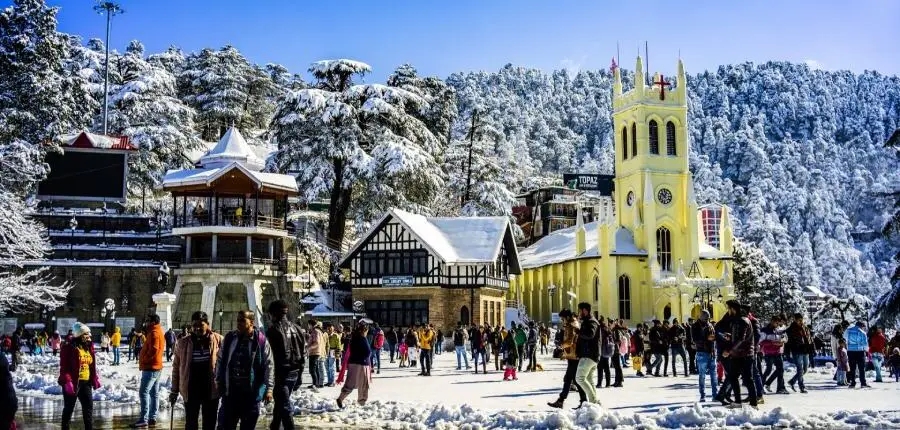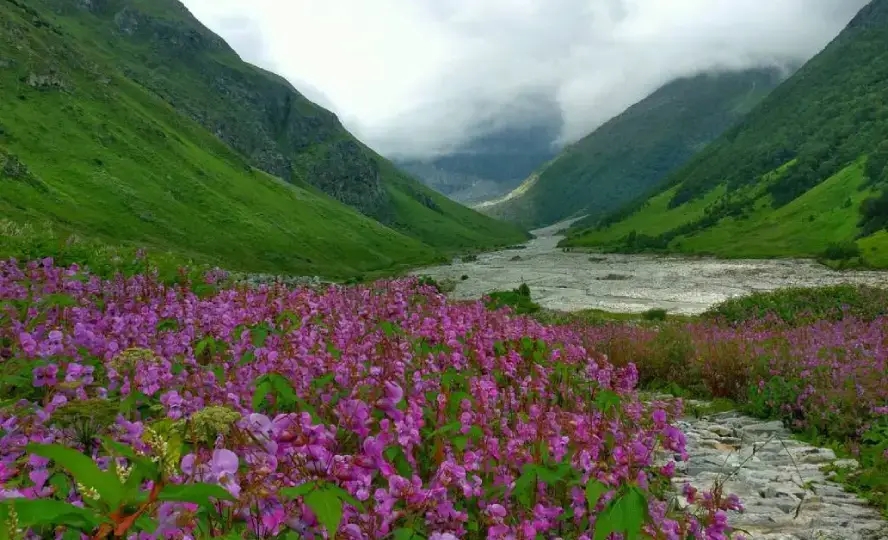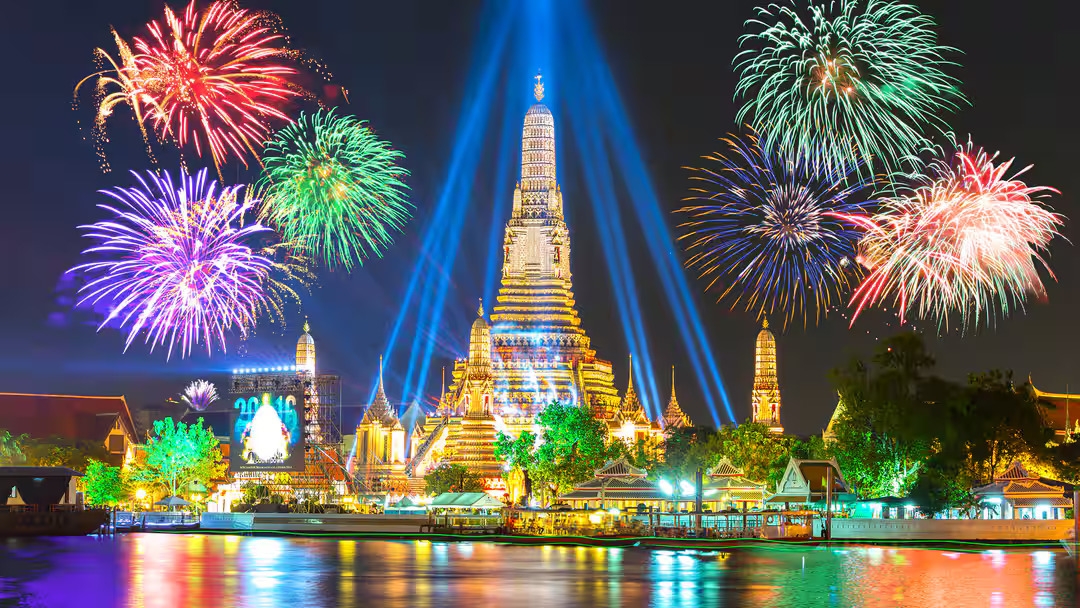Bhutan is home to some of the most stunning and spiritually significant monasteries in the world. These monasteries, often perched on cliffs or nestled in serene valleys, are a major draw for travelers looking to experience Bhutan's unique culture and spirituality. Here are some of the best monasteries to visit in Bhutan:
1.Tiger’s Nest Monastery(Paro Taktsang)
Tiger's Nest Monastery, also known as Paro Taktsang, is a sacred Buddhist site located on a cliffside in the Paro Valley of Bhutan. Located at an altitude of about 3,120 meters (10,240 feet), the monastery is one of the most iconic and photographed landmarks in Bhutan. The trek to Tiger's Nest is challenging yet rewarding, offering stunning views of the valley and a serene, spiritual atmosphere. The monastery complex consists of four main temples and several meditation caves, and it is an important pilgrimage site for Buddhists around the world. One of the most important parts of the monastery is the sacred meditation cave where Guru Rinpoche is said to have meditated. It is accessible only during specific religious ceremonies. Throughout the year, monks and devotees from across Bhutan come here to meditate and pay their respects. The construction of the monastery itself is an architectural marvel, given its location. It was painstakingly built on the cliff face, and the combination of natural beauty and spiritual significance makes it a symbol of Bhutanese identity. The best time to visit Paro Taktsang is during the spring (March to May) or autumn (September to November) when the weather is pleasant, and the views are clear. Monsoon rains in the summer and snow in the winter can make the hike more challenging. Tiger’s Nest Monastery remains a powerful symbol of Bhutanese culture, spirituality, and natural beauty. It is a place where history, legend, and devotion come together, offering visitors not just a breathtaking view but a profound spiritual experience.

2.Gangtey Monastery (Gangtey Goenpa)
Gangtey Monastery, also known as Gangtey Goenpa or Gangtey Gompa, is one of the most important Buddhist monasteries in Bhutan, nestled in the picturesque Phobjikha Valley in Wangdue Phodrang district. It is perched on a hilltop, offering breathtaking views of the valley below, which is renowned for being the winter home of the endangered black-necked cranes. The monastery holds great significance in Bhutanese religious life and is affiliated with the Nyingma school of Tibetan Buddhism. It was founded in 1613 by Pema Thinley, the first Gangtey Trulku (reincarnate lama), who was the grandson of Pema Lingpa, one of Bhutan’s most revered Buddhist saints and treasure revealers (terton). Gangtey Monastery is an exquisite example of traditional Bhutanese architecture. Its design is typical of Bhutan’s fortress-like dzongs, with thick whitewashed walls, multi-tiered wooden roofs, and intricately carved woodwork. The monastery is surrounded by a complex of buildings, including a central prayer hall (Lhakhang), meditation centers, monks' quarters, and several small shrines. At the heart of the monastery is the central tower (utse), which contains the main prayer hall. The interior is decorated with beautiful murals depicting the life of Guru Rinpoche Gangtey Monastery is not only a place of spiritual importance but also a focal point for one of Bhutan’s most unique and beloved festivals, the Black-Necked Crane Festival, held annually in November. The festival celebrates the arrival of the endangered black-necked cranes, which migrate to the Phobjikha Valley from Tibet to escape the harsh winter. The best time to visit Gangtey Monastery is between October and March, when the black-necked cranes migrate to the valley, and the monastery is surrounded by serene natural beauty. he valley is home to several hiking trails, including the popular Gangtey Nature Trail, a gentle walk that takes you through pine forests, traditional Bhutanese villages, and open meadows. Gangtey Monastery is not only a place of profound religious importance but also a symbol of Bhutan’s harmonious relationship with nature. Its rich history, stunning architecture, and location in the breathtaking Phobjikha Valley make it a unique destination that blends spirituality, culture, and environmental awareness.
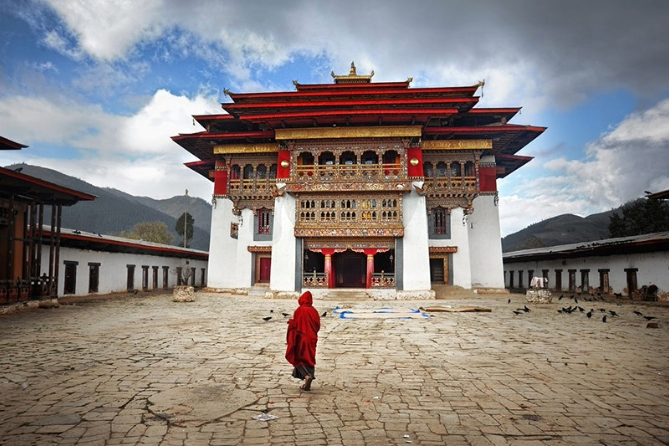
3.Tango Monastery
Tango Monastery, also known as Tango Goemba, is one of Bhutan’s most revered and significant religious institutions, located approximately 14 kilometers north of Thimphu, the capital of Bhutan. This historic monastery, perched on a hilltop overlooking the serene Thimphu Valley, is a prominent center of Buddhist studies and meditation for the Drukpa Kagyu school of Tibetan Buddhism. It is also an important retreat site for monks and serves as a place of pilgrimage for both Bhutanese and international visitors. ango Monastery was originally established in the 12th century by Phajo Drugom Zhigpo, a Tibetan lama who introduced the Drukpa Kagyu tradition to Bhutan. ango Monastery is deeply revered in Bhutan for its role in the training of monks and spiritual leaders. The architecture of Tango Monastery is a fine example of Bhutanese traditional design. The monastery is built in the shape of a "T," with a central tower (utse) that houses the main shrine. Tango Monastery is both a place of worship and a prestigious center for Buddhist education. It houses a Buddhist College where monks undergo rigorous training in Buddhist philosophy and scriptures. Reaching Tango Monastery requires a pleasant and moderately challenging hike. The trail begins at Dodena, near the Thimphu Valley, and winds through a scenic forest of pine and oak trees. The hike is about 3 kilometers (1.9 miles) and typically takes around an hour to complete. The best months to visit are from March to May and September to November, when the weather is pleasant and hiking conditions are favorable The monastery is home to various religious ceremonies and festivals throughout the year. One of the most significant is the Tango Tsechu, a religious festival that celebrates the life and teachings of Guru Rinpoche and other key Buddhist figures. Tango Monastery is a spiritual gem in Bhutan, offering visitors an opportunity to experience the rich cultural and religious traditions of the country.
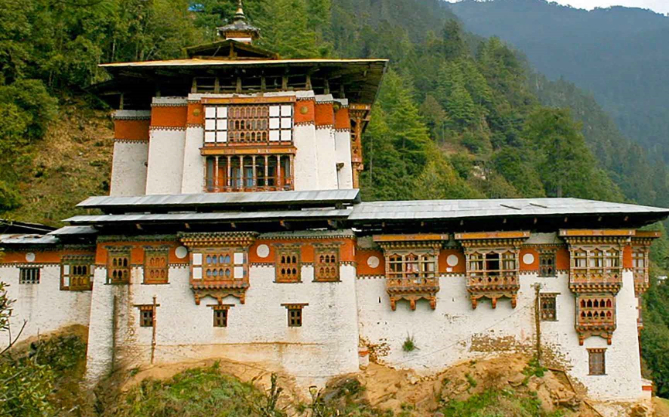
4.Cheri Monastery
Cheri Monastery, also known as Cheri Goemba, is one of Bhutan’s most sacred and historically significant Buddhist monasteries, located about 15 kilometers north of the capital, Thimphu. Founded in 1620 by Zhabdrung Ngawang Namgyal, the unifier of Bhutan, Cheri Monastery holds great spiritual and cultural importance in Bhutanese history. Nestled on the slopes of a forested hill, Cheri is an active meditation retreat and a key center for the Drukpa Kagyu school of Buddhism. Cheri Monastery is one of Bhutan’s most important meditation centers, particularly for those practicing the Drukpa Kagyu school of Tibetan Buddhism. Over the centuries, it has been a retreat center for countless monks seeking spiritual enlightenment through deep meditation and contemplation. Many famous Buddhist saints and scholars have practiced here, and it continues to serve as a place of retreat for monks and laypeople who come for extended periods of spiritual practice. It is an exquisite example of traditional Bhutanese monastic architecture. The main building, built on the hillside, has a classic Bhutanese structure with whitewashed walls, wooden windows, and intricately painted and carved details. Cheri Monastery is a renowned center for meditation retreats, and it attracts both Bhutanese monks and international practitioners seeking solitude and spiritual growth. The monastery is known for offering long-term meditation retreats, including the Three-Year Retreat, where monks engage in intensive meditation and study of Buddhist teachings in complete isolation. The quiet and secluded location of Cheri Monastery, surrounded by thick forests and the gentle sound of the nearby river, makes it an ideal place for spiritual contemplation. Reaching Cheri Monastery involves a scenic and moderate hike. The trail begins at the base of a hill near the village of Dodena, which is also the starting point for the hike to nearby Tango Monastery. During the religious events, pilgrims and devotees from nearby areas visit Cheri to offer prayers and participate in the spiritual activities. The monastery's tranquil setting makes it an ideal location for quiet reflection and spiritual connection. The best time to visit Cheri Monastery is from March to May and September to November, when the weather is pleasant, and the forested trails are vibrant with flowers and greenery. Cheri Monastery is a serene and spiritually significant destination in Bhutan. With its deep historical roots, its role as a center for meditation, and its peaceful setting, it offers visitors a glimpse into Bhutan’s rich monastic tradition and spiritual practices.
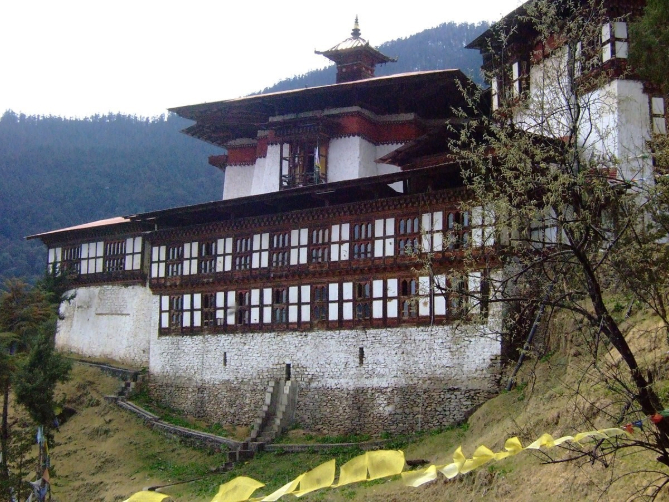
5.Kurjey Lhakhang
Kurjey Lhakhang stands as one of Bhutan's holiest monasteries in the Bumthang Valley. This old temple has deep spiritual meaning to Bhutanese Buddhists because of its link to Guru Rinpoche.People believe this respected saint brought Buddhism to Bhutan in the 8th century. "Kurjey" means "body imprint," pointing to the mark Guru Rinpoche left on a rock, which you can see inside the temple. The monastery has three main temples built at different times. Each shows its own unique design and spiritual roots. The monastery showcases traditional Bhutanese building skills, with detailed painted murals, prayer wheels, and spiritual symbols all over. Every year, the monastery puts on a Tsechu (religious festival). This event draws both followers and tourists, who come to watch traditional mask dances and rituals. The monastery sits in a quiet spot, with tall pine forests all around and a view of the beautiful Chamkhar River. This setting makes it a calm place for thought and prayer.
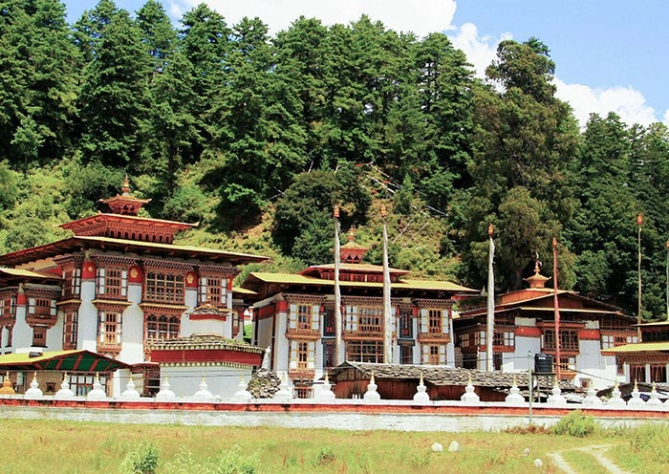
6. Rinpung Dzong
Rinpung Dzongis a majestic fortress and monastery in Paro, Bhutan. Its name translates to "Fortress of the Heap of Jewels," reflecting its grandeur and cultural importance. Rinpung Dzong is one of Bhutan's most renowned dzongs, serving as both a religious and administrative center. Built in 1646 by Zhabdrung Ngawang Namgyal, the founder and unifier of Bhutan, it played a critical role in Bhutan's defense against Tibetan invasions. The dzong has seen several renovations due to fires and earthquakes but remains a historic symbol of Bhutanese resilience. The dzong is an outstanding example of Bhutanese architecture, with towering whitewashed walls, intricately carved wooden balconies, and tiered roofs. The architectural style reflects Bhutan’s expertise in combining strength with beauty, blending seamlessly with the surrounding natural environment. It houses a monastery where monks live, pray, and perform daily religious activities. The dzong is an important place of worship and spiritual learning. One of the most celebrated festivals in Bhutan, the Paro Tsechu, is held annually at Rinpung Dzong. During this festival, monks and laypeople perform Cham (mask dances) in elaborate costumes, recounting Buddhist teachings through dance and storytelling. The dzong is perched on a hill overlooking the Paro Valley and the Paro Chhu River, offering stunning views of the lush valley below. The iconic Nyamai Zam, a traditional wooden cantilever bridge, connects the dzong to the rest of the valley. The surroundings, including terraced rice fields and dense forests, further add to the dzong's charm. Rinpung Dzong stands as a testament to Bhutan's rich heritage, blending religious devotion, architectural brilliance, and administrative functionality in a single awe-inspiring structure.
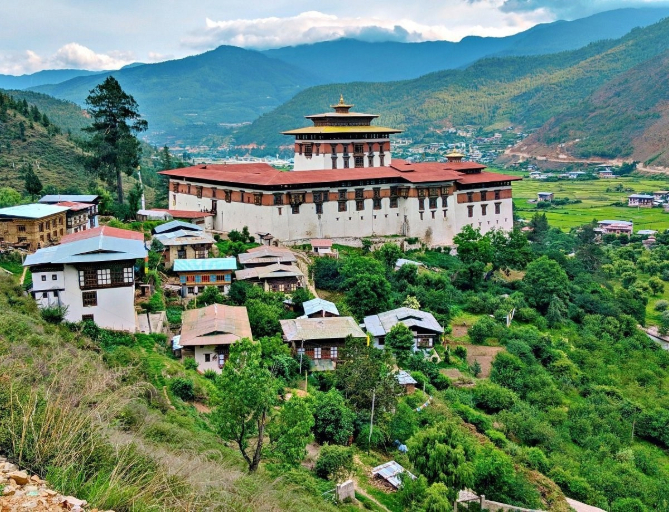
Each of these monasteries in Bhutan offers a unique spiritual and cultural experience, whether you're looking for a challenging hike, breathtaking views, or deep insights into Bhutanese Buddhism.


